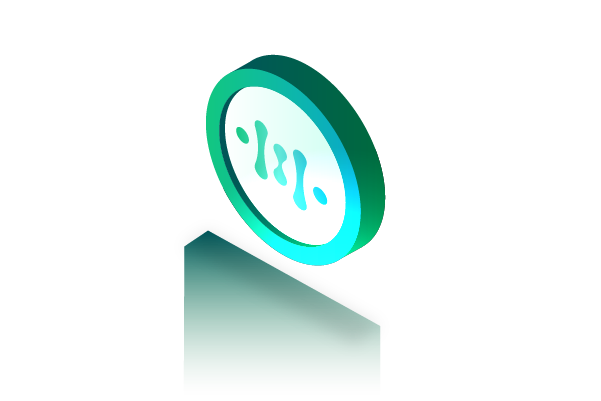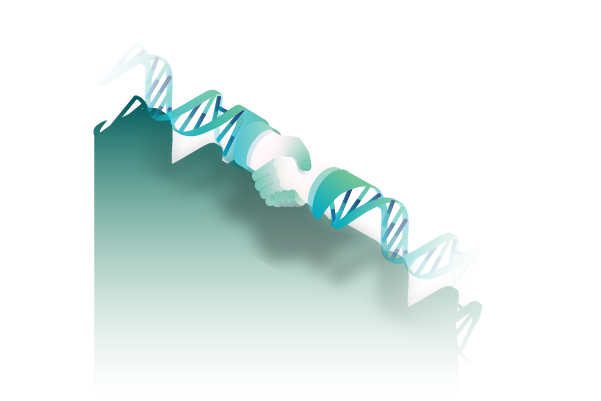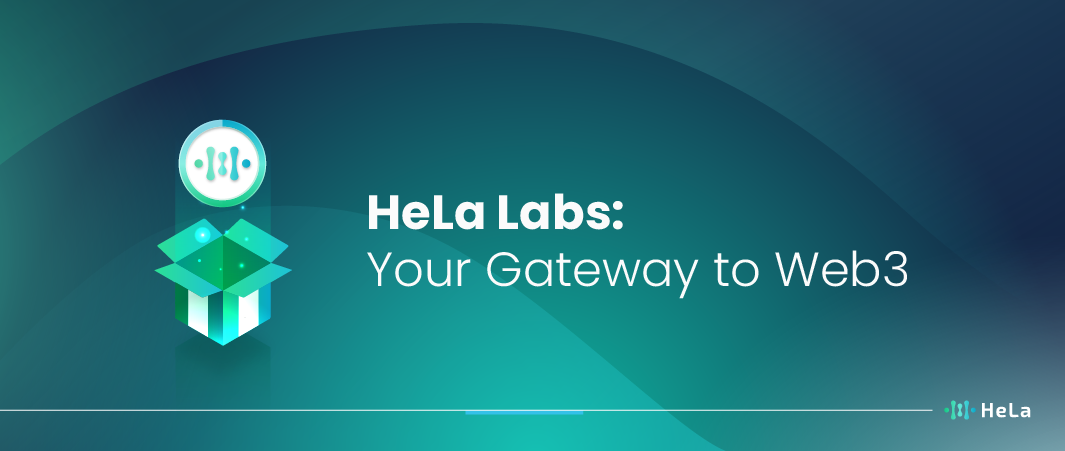Hela Chain emerges as a transformative Layer-1 blockchain platform, redefining the Web3 landscape with its innovative architecture and features. It boasts a modular design, enhancing flexibility and scalability, crucial for diverse blockchain applications. Its compatibility with the Ethereum Virtual Machine (EVM) makes it a versatile and developer-friendly choice.
What truly sets Hela Chain apart is its use of stablecoins for transaction fees, providing economic stability and broadening access to blockchain technology. Additionally, Hela Chain’s focus on data sovereignty and decentralized identity (DID) highlights its commitment to secure and private data management, making it a significant player in applications requiring robust data protection.
Understanding Hela Chain’s Modular Architecture
Hela Chain introduces a groundbreaking modular architecture in blockchain technology, focusing on flexibility and scalability. This architecture enables seamless integration of varied functionalities, positioning Hela Chain as a versatile platform for diverse applications.
Customizable Experience
Hela Chain’s design philosophy centers around delivering a highly customizable blockchain experience. This is achieved through a modular architecture, where different modules can be developed and integrated seamlessly into the system. Such a structure allows for the tailoring of the blockchain to meet specific needs and preferences without compromising the core functionality of the platform. This modularity is especially vital in the context of the rapidly evolving technological landscape, where new needs and challenges arise frequently.
It enables Hela Chain to be versatile and responsive to changes, whether they are in market demands, regulatory environments, or technological advancements. The ability to customize and extend the blockchain platform without disrupting its fundamental operations is a significant boon for developers and businesses alike, as it offers the flexibility to innovate and adapt while maintaining a stable and reliable underlying system.
Scalability
Scalability is a critical feature for any blockchain platform, and Hela Chain addresses this through its unique modular structure. In an era where blockchain technology is being adopted across various sectors, the capacity to handle increasing transaction volumes, data loads, and concurrent users without degrading performance is essential. Hela Chain’s architecture is designed to scale efficiently, accommodating growth in usage and complexity with ease.
The modular approach allows for specific components of the blockchain to be scaled or upgraded independently, ensuring that the system as a whole can continue to operate smoothly even as individual parts are enhanced. This scalability ensures that Hela Chain remains a robust and viable solution for a wide range of applications, from small-scale projects to large-scale enterprise solutions, without hitting performance bottlenecks that could hamper growth or user experience.
Adaptability
The adaptability of Hela Chain is a cornerstone of its design. The blockchain world is dynamic, with new technologies and methodologies emerging regularly. Hela Chain’s modular framework allows it to integrate these advancements without the need for a complete system overhaul. This means that as new features become desirable or necessary, whether due to technological advancements, user demands, or regulatory changes, Hela Chain can incorporate them with relative ease.
This adaptability ensures that Hela Chain does not become obsolete or lag behind in innovation. Instead, it can evolve and grow, maintaining its relevance and effectiveness in an ever-changing digital landscape. This adaptability extends beyond just technical capabilities; it also means that Hela Chain can adapt to different regulatory environments, making it a versatile platform for global operations.
Strategic Asset
Beyond its technical prowess, Hela Chain’s modular architecture is a strategic asset. This flexibility and scalability make Hela Chain an attractive proposition in various industries, from finance to healthcare, and beyond. In finance, for example, the need for secure, efficient, and transparent transactions can be met by Hela Chain’s robust architecture, which can be tailored to meet the specific compliance and operational requirements of the sector. In healthcare, the ability to handle sensitive data securely while ensuring scalability for large amounts of data is crucial, and Hela Chain’s architecture is well-suited for this.
The platform’s design allows it to meet diverse requirements, making it a versatile and future-proof solution. This positions Hela Chain for long-term success and broad adoption, as it can cater to the unique needs of various sectors while offering the benefits of blockchain technology, such as decentralization, security, and transparency.
Also Read: Things You Should Know About Hela Labs
EVM Compatibility and its Advantages
EVM compatibility is a critical feature for blockchain platforms like Hela Chain, as it offers several significant advantages:
Interoperability
One of the most significant benefits of EVM compatibility is interoperability. It allows for seamless interaction with Ethereum, one of the largest and most established blockchain networks, as well as other EVM-compatible chains.
This interoperability is crucial for facilitating cross-chain transactions and communication, which are vital for the development of complex decentralized applications (dApps). By enabling different blockchain networks to communicate and share information, Hela Chain can support a more interconnected and efficient blockchain ecosystem.
Developer Familiarity
The Ethereum platform has a large, active developer community with a wealth of resources and knowledge. By being EMV-compatible, Hela Chain can tap into this existing talent pool. Developers familiar with Ethereum’s Solidity programming language and development tools can easily adapt to Hela Chain, reducing the learning curve and accelerating the development process. This familiarity is incredibly valuable in a field where the technology and best practices are rapidly evolving.
Rich Ecosystem
Ethereum’s ecosystem is vast, comprising numerous tools, dApps, smart contracts, and frameworks. EVM compatibility means that Hela Chain can leverage this rich ecosystem, giving developers access to a wide array of pre-existing resources. This not only speeds up the development process but also ensures that dApps built on Hela Chain can be as complex and feature-rich as those on Ethereum. Moreover, it fosters a sense of community as developers can easily share and adapt each other’s work for different platforms.
Flexibility and Scalability
EVM compatibility often comes hand-in-hand with enhanced scalability solutions. Platforms like Hela Chain, by aligning with EVM standards, can implement more efficient consensus mechanisms or layer-2 solutions to address common blockchain challenges such as high transaction fees and low throughput. This results in a more flexible and scalable platform, capable of supporting a large number of transactions and complex dApps, which is crucial for widespread adoption and user satisfaction.
Innovation and Adoption
By being EVM-compatible, Hela Chain positions itself as an attractive platform for a broad range of developers and users, including those already invested in the Ethereum ecosystem. This compatibility lowers barriers to entry, fostering a diverse and innovative development environment. Increased adoption by developers leads to more dApps and use cases, which in turn attracts more users, creating a positive feedback loop that drives further growth and innovation on the platform.
Security and Stability
The Ethereum Virtual Machine is a well-established and thoroughly tested platform. By being EVM-compatible, Hela Chain can benefit from Ethereum’s robust security protocols and stable environment. This is particularly important in the blockchain space, where security vulnerabilities can have significant consequences. A platform that can offer proven security and stability is more likely to gain the trust of developers and users alike.
Cost-Effectiveness
Developing a new or less common blockchain platform can be resource-intensive, requiring significant investment in learning new languages or developing new tools. EVM compatibility allows developers to use their existing knowledge and tools, making development on Hela Chain more cost-effective. This is especially beneficial for smaller startups or independent developers who may have limited resources. Lower development costs can also lead to more experimentation and innovation, as developers are more willing to take risks when the financial stakes are lower.
EVM compatibility thus positions Hela Chain as a robust, flexible, and developer-friendly platform, which is essential for fostering innovation and growth in the rapidly evolving blockchain technology sector.
Also Read: Layer 1: Definition and How does it work?
The Role of Stablecoins in Hela Chain

Stablecoins play a critical role in the Hela Chain ecosystem, primarily by enhancing transaction cost stability and accessibility. This is particularly significant in blockchain environments where transaction fees can be volatile and unpredictable due to fluctuating cryptocurrency values. By employing stablecoins for transaction fees, Hela Chain ensures a more predictable and stable cost structure.
This stability is crucial for users who need to budget for transaction costs, especially in business or enterprise settings where financial planning and predictability are key. It also makes the Hela Chain more accessible to a broader range of users. Those who might be hesitant to engage with cryptocurrencies due to their volatility might find the stability offered by stablecoins more appealing.
Moreover, the use of stablecoins can facilitate smoother interactions with traditional financial systems and fiat currencies, providing a bridge between the two worlds. This can be especially beneficial for cross-border transactions, where stablecoins can minimize the complications and costs associated with currency conversions and fluctuating exchange rates.
Data Sovereignty and Decentralized Identity

Data sovereignty and decentralized identity are increasingly important concepts in the world of digital technology and cybersecurity. They refer to the principles and technologies that empower individuals to own, control, and manage their personal data, as well as ensuring that this data is processed and stored in a way that complies with the laws and regulations of the country in which the individual resides.
Hela Chain’s approach to prioritizing data privacy and security through its advanced Decentralized Identity (DID) system represents a significant advancement in this area. Decentralized Identity systems allow users to create and manage their digital identities without relying on central authorities or intermediaries. This system gives users more control over their personal information, enhancing privacy and security.
By implementing such a system, Hela Chain is taking a substantial step towards protecting user identities and data. It allows users to have more autonomy over their digital presence and ensures that their personal information is handled in a secure and compliant manner. This approach is crucial in the modern digital landscape, where data breaches and misuse of personal information have become significant concerns.
Collaborations and Expertise Behind Hela Chain

Hela Chain, an innovative blockchain project, has significantly benefited from its collaboration with the renowned A*STAR Institute of High Performance Computing (IHPC). This partnership is a testament to the project’s commitment to cutting-edge technology and high-quality development.
The A*STAR IHPC, known for its outstanding research and development in computational science, brings a wealth of knowledge and technical prowess to the table. Their expertise in complex algorithms, data analysis, and computational strategies is invaluable in the blockchain domain, where such skills are crucial for security, efficiency, and scalability.
Hela Chain’s development team, on the other hand, is a group of highly skilled professionals with a deep understanding of blockchain technology. Their proficiency in coding, system architecture, and blockchain protocols ensures that Hela Chain is built on a solid foundation. This combination of IHPC’s research strength and the development team’s practical expertise makes Hela Chain a promising venture in the blockchain space.
The collaboration between these two entities is not just a pooling of resources but a fusion of academic research and practical application. This synergy is likely to propel Hela Chain towards innovative solutions, robust security measures, and a scalable infrastructure, making it a noteworthy player in the blockchain industry.
With such a strong backing, Hela Chain is poised to address some of the most pressing challenges in blockchain technology and could potentially lead to groundbreaking developments in the field.
Conclusion
Based on the detailed overview, Hela Chain is poised to be a groundbreaking addition to the blockchain space, particularly in the realm of Web3. Its modular architecture is a standout feature, offering unparalleled flexibility and scalability. This design enables it to adapt swiftly to changing technological landscapes and diverse application needs, making it a highly customizable and future-proof platform. Such an approach is crucial in the fast-evolving blockchain sector, where responsiveness to new challenges and opportunities is key.
Another significant aspect of Hela Chain is its EVM compatibility, which ensures interoperability with the established Ethereum network and other EVM-compatible chains. This compatibility not only opens doors to a vast pool of existing developers and resources but also fosters innovation and user adoption. It addresses common blockchain challenges like scalability and high transaction fees, making Hela Chain a robust, versatile, and user-friendly platform.
Lastly, Hela Chain’s emphasis on data sovereignty and privacy through its advanced Decentralized Identity (DID) system marks a crucial step in secure and private data management. In addition, its use of stablecoins for transaction fees addresses the volatility issue commonly associated with cryptocurrencies, enhancing economic stability and broadening blockchain access. Combined with the expertise and collaborations behind its development, Hela Chain stands out as a strategic and innovative solution, with the potential to redefine blockchain applications across various sectors.
Disclaimer: The information provided by HeLa Labs in this article is intended for general informational purposes and does not reflect the company’s opinion. It is not intended as investment advice or recommendations. Readers are strongly advised to conduct their own thorough research and consult with a qualified financial advisor before making any financial decisions.

Hi, I'm Carina, and I've been captivated by the world of web3 for as long as I can remember. Ever since I first dipped my toes into this innovative technology, I've found myself drawn to exploring and understanding its infinite potential. The complexities of layer 1 solutions particularly intrigue me, as they form the foundation of decentralized networks and pave the way for a more transparent and efficient digital landscape.
- Carina Caringalhttps://helalabs.com/blog/author/carina-caringal/
- Carina Caringalhttps://helalabs.com/blog/author/carina-caringal/
- Carina Caringalhttps://helalabs.com/blog/author/carina-caringal/
- Carina Caringalhttps://helalabs.com/blog/author/carina-caringal/

